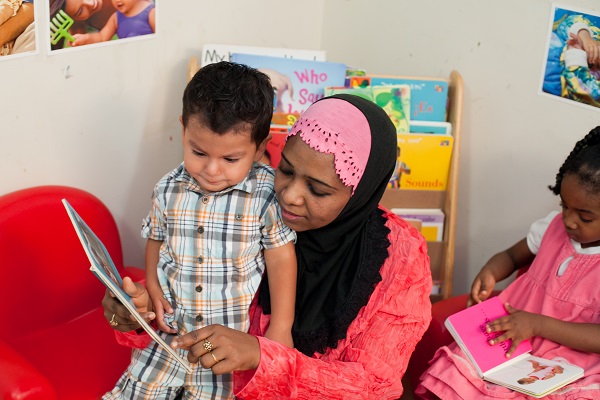Visual Supports for Infants and Toddlers
Explore this special collection of visuals that was designed to support the participation and learning of young children between the ages of 16 to 36 months.
 Individualization is the process of adapting teaching in response to each learner's identity, interests, family culture and language, strengths, and needs. These resources help program staff individualize the learning environment and the ways in which they interact with and engage children.
Individualization is the process of adapting teaching in response to each learner's identity, interests, family culture and language, strengths, and needs. These resources help program staff individualize the learning environment and the ways in which they interact with and engage children.
Learn about more specialized and intensive support through highly individualized teaching for children with disabilities.
Explore this special collection of visuals that was designed to support the participation and learning of young children between the ages of 16 to 36 months.
These pictures and visuals help present important information in a way that children can understand and use. They encourage engagement and learning in many different settings, routines, and activities.
Use these stories to teach children a variety of social skills and norms. Print and personalize the story for a specific child and read it one-on-one when the child is calm and relaxed.
These short training suites help Head Start staff across all program settings learn how to use highly individualized teaching practices to make sure infants and toddlers with disabilities participate and learn alongside their peers.
Explore resources to understand and meet the learning needs of infants and toddlers with disabilities through the use of highly individualized teaching strategies. Learn about the importance of strong partnerships with families and early intervention agencies.
View this video for an introduction of the 15-minute In-service Suite on differentiating leaning opportunities in early math.
Learn about the “why,” “what,” and “how” of individualizing care for infants and toddlers. Find related Head Start Program Performance Standards (HSPPS), additional resources, and reflection questions to use with staff and other program leaders.
Learn why individualizing care is important for infants and toddlers, including dual language learners and children with disabilities.
Learn how observing children is a key part of what education staff in Head Start infant toddler programs do daily. Observation involves focus, purpose, and watching and listening to learn about individual children.
Learn about ways to observe infants and toddlers—a key part of the ongoing child assessment cycle. Explore strategies to support this important component of quality infant and toddler care.